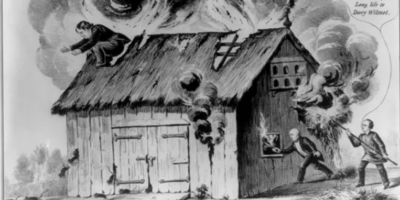By Clay Wainscott
Could it be the entire edifice of contemporary art is simply irrelevant? Or, more precisely, not up to the job at hand. Big time art just wandered off somewhere following fame and money, a self-referencing cult of acquisition as volatile as the stock market, but peculiar, the brand name so much more important than the product. Surely there must be something more to say about a renowned artist than the highest price paid at auction, the presiding metric of accomplishment and a working index of fame. They’d have you think the irrelevant part was the art itself. Somewhere along the line, art, as an expression of personal aspiration and universal connection, seems to have left the tracks.
In the early fifties, the Abstract Expressionists invaded, conquered, and subjugated all of art, banning representational images of anything. They were radical fundamentalists, turning the art clock back to year one, or at least to the level of a three or four year old.
Andy Warhol was a strip miner, excavating a vein of human vileness for fame and riches, while pushing the vision, the humanity, and the enduring consolation of art off into valleys, damming streams, poisoning the water, leaving the entire territory uninhabitable.
Contemporary art has become an elbows and umbrellas stampede toward the portals of momentary attention and notoriety, silly postures and self-effacement to the sky. In schools art merges with marketing. Graduates seem to care less about art than money and fame. Thanks Andy.
The enablers on this bus to nowhere have been the ultra wealthy who love to play at speculation for its own sake, and they’ll all be caught together when the masquerade is over—tons of remorseless crap seen for what it really is. There’s nothing in Jeff Koons, or Damien Hirst, or Richard Serra, or the rest for serious thoughtful people seeking personal stability and affirmation in the chaotic winds of modern times.
In Mexico, historically a turbulent caldron of separate interests in violent armed conflict, it was the painters who gave them all a sense of national unity, of common history, of cultural pride without firing a shot—Diego Rivera, first among many. Here, it’s time to simply deflate the ponzi-premised, stage-managed bubble called contemporary art, and look for a visual expression more honest, more authentic, and more directly reflective of known and felt experience. Closer to home would be a good place to start.




Leave a Reply